Introduction
In today’s global economy, businesses process thousands of addresses daily. These location data points are linked to their customers, suppliers, or facilities. However, they often enter systems with inconsistencies, errors, and omissions, undermining their value.
Address normalization turns messy information into standardized, reliable data. It follows set postal rules and meets business needs.
Address normalization isn’t merely good data hygiene for organizations operating internationally or managing large customer databases. It’s a strategic imperative that impacts customer experience, operational efficiency, and financial performance.
Your address data quality affects many things. It impacts shipping accuracy, marketing effectiveness, regulatory compliance, and how resources are allocated.
💡 Do you ever want to eliminate international address validation errors? Access our most comprehensive worldwide ZIP code database with international address formats. Precise, accurate, and up-to-date. Browse GeoPostcodes databases and download a free sample here.
Defining Address Normalization: The Fundamental Process
Address normalization converts diverse location data into standardized formats. This section covers the concept and main parts for using global addressing systems effectively.
What is Address Normalization
Think of address normalization as putting everything in labeled folders. It changes different location data into consistent, standardized formats that follow postal rules.
This process extends beyond simple text standardization. It builds consistent structures. This enables accurate processing and easy location comparisons across different business systems and areas.
Normalization makes formatting consistent. It changes abbreviations, capitalisation, and punctuation to standard forms.
For example, entries like “123 Main Street,” “123 Main St.,” and “123 MAIN STREET” would all be in a single, standardized format according to defined rules.

The Core Components of Effective Address Normalization
A good address normalization system cleans up messy address data. It makes the information standardized and easy to use. Let’s break it down step by step:
We begin our normalization sequence by parsing addresses. We break them down into their key parts. This key first step identifies and separates details such as street numbers, street names, unit identifiers, cities, regions, ZIP codes, and countries for processing.
Practical parsing needs to manage how addresses are written around the world. It should also recognise the different formats used in various countries.
Following parsing, each address element undergoes standardization according to defined rules.
This process applies consistent conventions for abbreviations, capitalization, punctuation, and other formatting. The rules need to fit each country’s postal requirements. This ensures that addresses meet local standards.
Solving the Complexities of Global Address Normalization
Address normalization can be tricky. This happens due to different formats in countries, language differences, and varying data quality. To solve these challenges, we need rules for each country, smart matching algorithms, and precise reference data. This will help make sure every address is complete, correct, and usable. Let’s quickly have a look:
International Address Formats
Working with addresses from different countries makes normalization challenging. Every country has unique address formats, postal systems, and admin structures. Your global address system needs to manage these details correctly.
These address structures often reflect historical developments, cultural practices, and governmental systems.
In the United States, addresses usually follow a set pattern: number before street name, like “123 Main Street.” At the same time, many European countries place the street name before the number (e.g., “Hauptstraße 123” in Germany).
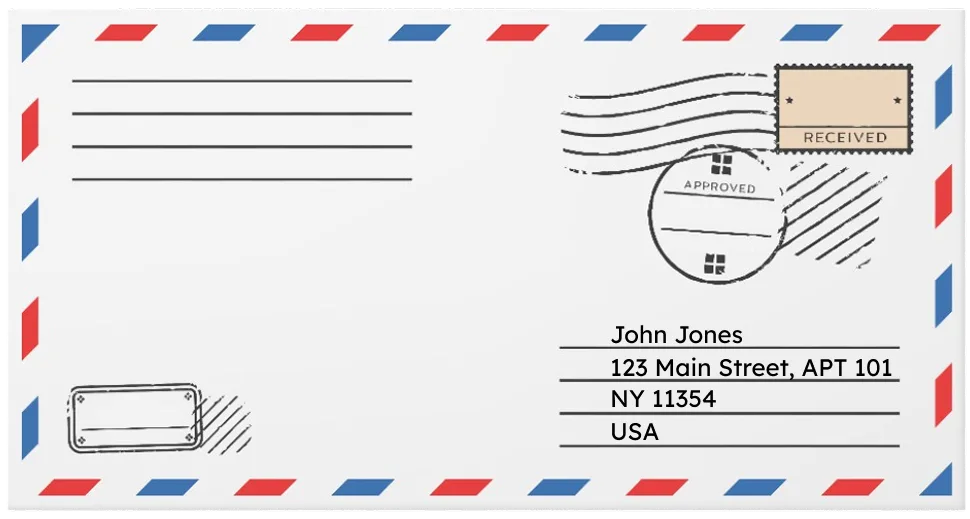
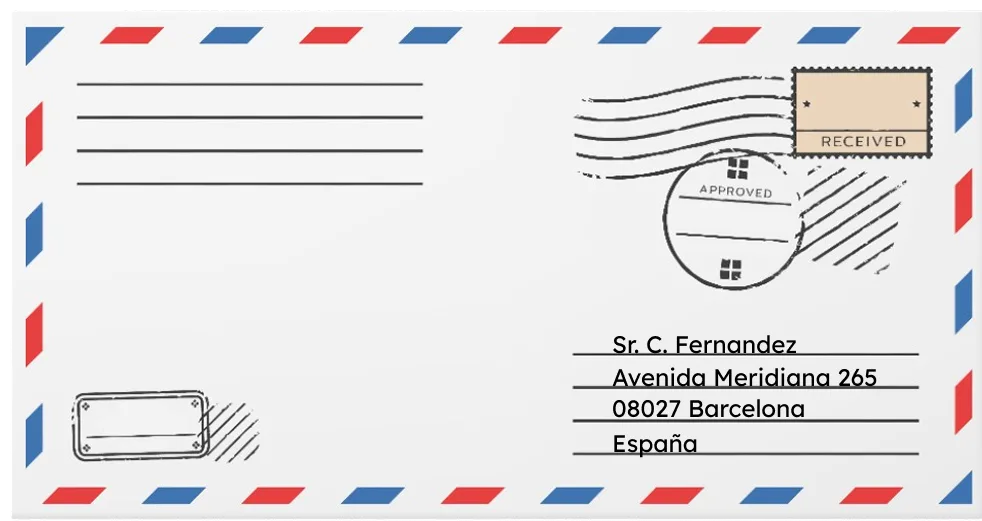
Japanese addresses have a clear structure. They start with the largest area and move to smaller ones. The recipient’s information comes last.
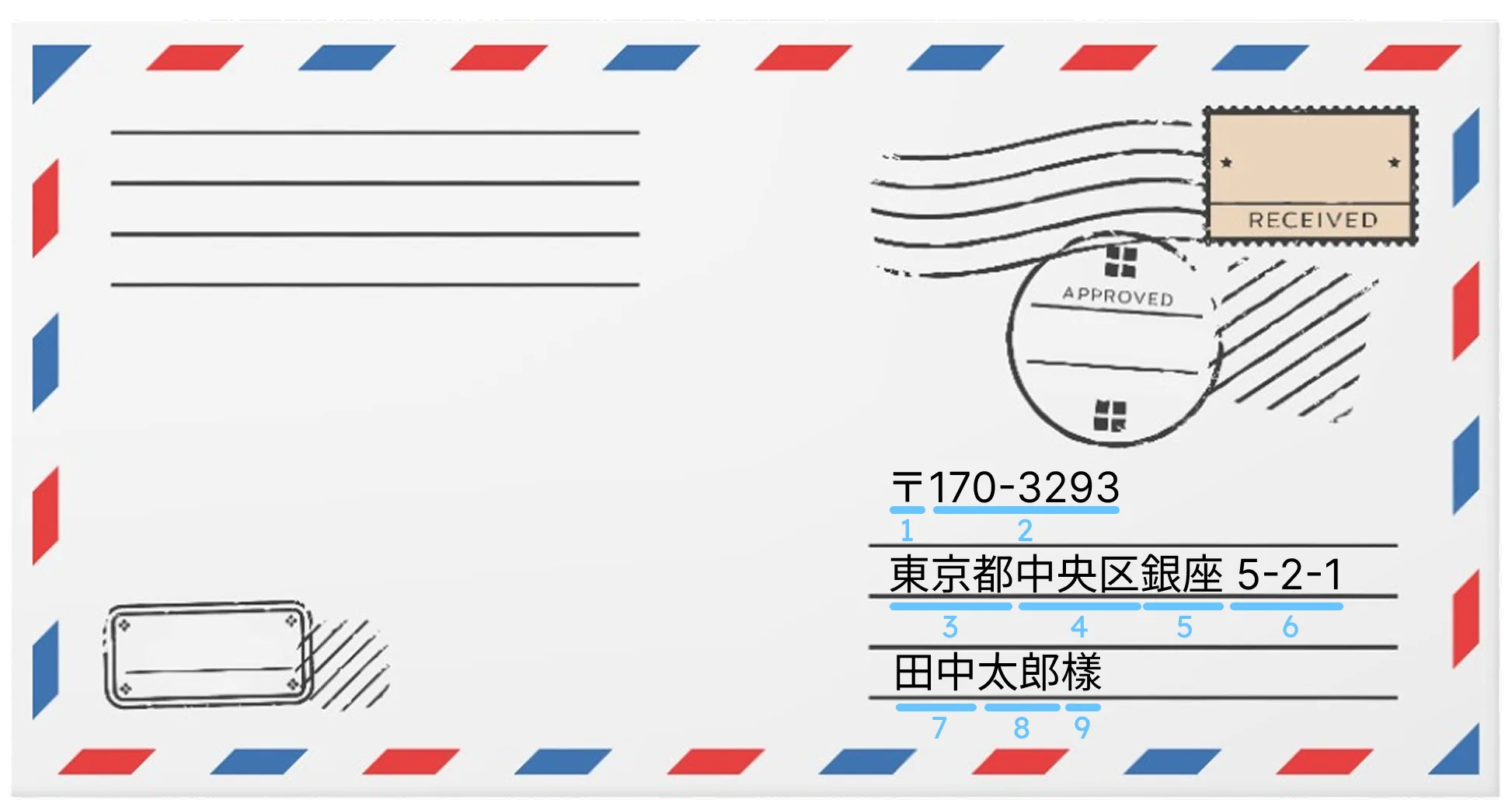
The structural differences mean we need different rules for addresses in each country.
Languages and character sets also make international addresses tricky. Addresses might use different alphabets, scripts, or languages.
For example, the German city München is called “Munich” in English and “Monaco di Baviera” in Italian. Effective normalization must handle these differences while keeping the address accurate.
Common Challenges and Solutions
One of the biggest challenges is incomplete address data. People often leave out parts they consider unnecessary or don’t have the complete information.
Advanced normalization systems use smart completion algorithms. These algorithms fill in missing elements using the data that is available. These algorithms can find out which town an address belongs to by checking the ZIP code. They can also identify the right city using street names and nearby landmarks.
Spelling variations are a big problem, especially with foreign addresses. Unfamiliar names can lead to more errors.
Modern systems use fuzzy matching algorithms. These can find and correct common mistakes. They work by looking at phonetic similarities and recognising typical error patterns.
These systems calculate confidence scores for possible matches. They fix high-confidence matches on their own and flag unclear ones for human review.
The Critical Role of Reference Data in Address Normalization
Effective address normalization relies on high-quality, comprehensive, and up-to-date reference data. This data is a reliable source for formatting, validation, and meeting regulations in various areas.
This reference foundation includes datasets like postal databases. These contain official street names, ZIP codes, and admin relationships. They also verify if addresses exist and can receive deliveries.
These datasets should come directly from postal authorities or trusted providers. This will ensure accuracy.
The postal data shows a hierarchy of administrative regions, from countries to neighborhoods. They provide key information on setting up addresses and make sure the parts fit well.
These databases let you check if streets are in the listed cities and if postcodes match their areas.
Why Expertise in Address Normalization is Essential
Effective address normalization goes beyond just technical tools. It needs specialized expertise in postal systems, address rules, and data management practices.
Getting addresses right takes more than just technology. It needs real expertise, too. You need to know how postal systems operate and how address formats differ around the world. Also, you must learn to manage all that data correctly.
Companies that build this knowledge, either in-house or via data solutions, gain a big edge. They work more efficiently. They deliver a better customer experience. They also make smarter strategic decisions using clean, consistent data.
Business Benefits of Advanced Address Normalization
Address normalization system adds huge value across multiple business dimensions. Progressive companies notice quick savings and better operations from improved data quality. Let’s look at how it can impact your business:
Optimizing Logistics and Supply Chain Operations
Address normalization affects logistics operations from daily deliveries to big-picture planning. For companies that move physical products, high-quality address data matters a lot. It affects their efficiency and costs directly.
The most immediate and obvious logistics benefit is delivery accuracy. Standardized addresses cut down on failed deliveries, returns, and extra charges. They make sure locations are valid and can be delivered to. This reduces driver time searching for locations and improves efficiency and customer satisfaction.
Route optimization is another key application. When addresses are formatted consistently, they can be reliably geocoded for routing systems. This helps plan delivery orders more efficiently. It also makes better use of trucks and drivers. Plus, it supports accurate delivery time estimates and improves customer communication.
Enhancing Compliance and Risk Management
Address normalization does more than just improve operations in the financial services industry. It’s essential for regulatory compliance, risk assessment, and fraud prevention.
Banks and financial firms must meet strict rules for customer data quality. So, address normalization becomes essential for managing their data.
Know Your Customer (KYC) and Anti-Money Laundering (AML) rules require banks to verify their customers’ identities. They also need to watch for any strange activities.
Address verification is crucial in these processes. Normalisation improves verification by making sure addresses are formatted consistently. This way, they can be easily compared with official sources.

Standardized addresses match better with verification databases. This catches more real problems and cuts down the need for humans to check similar-looking mismatches.
Accurate ZIP codes and street details are key for assessing risk in lending and insurance. Normalized addresses can be accurately geocoded. This helps assess location-specific risks like flood zones, crime rates, and property values.
This location intelligence supports more accurate risk pricing and appropriate safety measures. Without normalization, addresses may be geocoded incorrectly. They may not align with risk databases. This can cause mispriced risk or bad approval choices.
Improving Healthcare Delivery
The healthcare sector faces unique challenges and requirements when managing addresses. Getting this right matters. It impacts patient care, billing, and regulatory compliance. Address normalization makes healthcare systems work better, both behind the scenes and in clinics.
A key use of address data in healthcare is to communicate with patients. The message needs to get to the right place and person. This applies to appointment reminders, test results, billing info, or treatment instructions.
When addresses are normalized, communication becomes more reliable. This means less returned mail, timely information, and fewer missed appointments. That’s great for admin staff and healthcare providers.
For sensitive information, like test results or diagnoses, you may need delivery confirmation. In those cases, an accurate address is not only helpful but critical.
Care coordination between doctors, clinics, and hospitals relies heavily on accurate address data. Standardized addresses help handle referrals, transfers, and follow-up plans faster and more effectively.
Normalized address data also helps assign services based on a patient’s location. This helps them find the right clinic or hospital for their needs and location.
Strengthening Retail Businesses
For retail and e-commerce businesses, product quality matters. It impacts customer experience, operational efficiency, and brand perception.
Normalising addresses makes deliveries smoother and supports creative location-based marketing. That means happier customers and better business growth.
The most obvious benefit? Fewer delivery issues. Validating and standardising addresses reduces failed deliveries, returns, and long customer service calls.
Every delivery failure adds shipping and handling costs. It hurts customer satisfaction and may lead to lost business. Validating addresses at the time of order helps retailers save money and satisfy customers.
Accurate address data is even more important for omnichannel retail strategies. Customers want a smooth, connected experience. This is true whether they shop online, pick up in-store, or check local availability.
Features like BOPIS (buy online, pick up in store), checking local inventory, and store locators depend on accurate address data. Normalized addresses make it easy to find the nearest store fast and accurately. This way, customers enjoy the convenience and speed they expect.

Navigating International Shipping
International shipping is a whole different game from domestic shipping. You must handle various address formats, validation rules, and customs paperwork. These can differ from country to country.
To get deliveries right across borders, addresses need to follow the rules of the destination country. Each country structures addresses differently. They have unique ZIP codes, required fields, and formats.
Without country-specific normalization, addresses fail to meet international shipping requirements. Packages might be delayed at customs, sent back, or never delivered.
Advanced address normalization platforms apply destination-specific formatting rules. They automatically adjust addresses to meet each country’s postal and customs rules. This reduces risk and makes the shipping process smoother.
Another big challenge is language. Customers enter their addresses in different ways. They might use native character sets, transliterations, translated names, or even local slang.
Robust international normalization can handle that. It can read native characters, transliterate easily, and format shipping labels and customs properly. This flexibility helps ensure deliveries stay accurate, regardless of the address type.
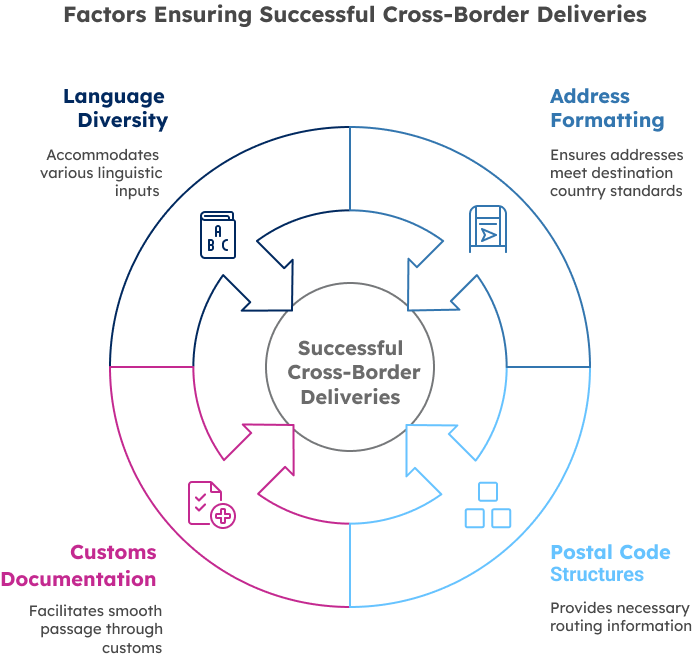
Enhancing Marketing Effectiveness
Marketing teams use location data every day. They rely on it for customer segmentation, targeting campaigns, and analysing performance. Address normalization helps marketers by providing reliable location information. This makes their work easier and more effective.
Whether a digital ad or a direct mailer, geo-targeting only works if the location data is solid. Normalized addresses help you reach the right people. You can focus on one neighbourhood or connect with a larger area.
This precision makes sure that location-based promotions reach all qualified prospects. It also prevents missing eligible customers from address formatting issues or geocoding errors.
For local businesses, targeting the right audience means fewer wasted impressions and better ROI.
Location is also a major factor of customer segmentation. Marketers often use geography along with demographic or behavioral data. This helps them form detailed audience groups. When address data is normalized, customers can always be assigned to the correct region, territory, or market area.
That consistency matters. It helps teams compare segments more accurately and track how each region performs over time.
Even better? Combining normalized addresses with ZIP codes or neighborhood-level demographic data gives useful geodemographic insights. That’s a game-changer for highly targeted campaigns that speak directly to the right audience.
Powering Advanced Technologies
The technology behind address normalization has advanced greatly. Today’s systems use smart tools to understand complex global address data. They do this better than ever.
Knowing these tech basics helps us see what modern normalization systems can and can’t do.
Pattern recognition algorithms are at the core of these tools. These tools spot and break down the structure of an address, regardless of the format or local rules.
They use advanced rules, regular expressions, and machine learning models. These help identify parts of the address based on the country or region.
The system can identify key parts of an address, even if entered unusually. It picks out street numbers, names, unit numbers, and ZIP codes. That flexibility is key for handling all the different ways people write addresses.
Another big piece of the puzzle is natural language processing (NLP). This helps systems read addresses in everyday language. It works well, especially when people use abbreviations or informal terms.
NLP techniques find when different terms mean the same address element. For instance, they recognise that “Ave,” “Avenue,” and “Av” refer to the same thing.” represent identical street types.
It’s really useful when people enter addresses as free text. This often happens when someone types their entire address into one box. With NLP, the system can still extract clean, structured data from that messy input.
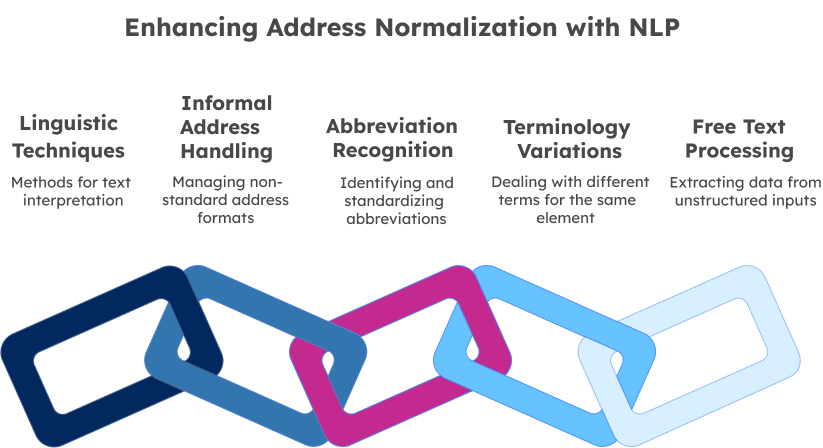
Conclusion
In this article, we looked at how address normalization varies by industry and region. It’s a complex process, and no universal approach works for everyone.
Every step, from parsing to validation, is key to cleaning messy location data. When done well, this process makes data a valuable asset. It helps with operations, analytics, and customer engagement throughout the organisation.
But managing all these differences isn’t easy. It requires substantial resources and specialized knowledge. Many companies don’t have the resources or skills to build and run a strong normalization system.
For over 15 years, GeoPostcodes has built the most complete location database. It relies on over 1,500 trusted sources to ensure accuracy and current information. Our global database is standardized and updated regularly. It supports practical analysis and helps develop strategies across markets. Feel free to download a free sample here and request a quote.
FAQ
How do I standardize my address?
Use USPS address standardization services or CASS-certified software to standardize your address. These tools parse address data, correct formatting issues, and align your street address with USPS standardized address formats, significantly reducing poor address data problems.
You can also use location data providers. They offer global address, ZIP code, and boundary databases. This helps you standardize and verify addresses easily, especially when USPS tools fail outside the US.
What is the standard format for USPS address?
The correct address format for USPS includes the recipient’s name, street address with number and name, apartment/suite (if applicable), city, state, and ZIP code. CASS addresses standardization, ensures compliance with standardization, and addresses normalization requirements for efficient mail delivery and processing.
Does the USPS do address correction?
Yes, USPS offers address correction through its standardization and normalization services. The Coding Accuracy Support System (CASS) checks and fixes bad address data. It makes sure every street address follows USPS standards. This helps with better mail processing and delivery.
Why can’t USPS standardize my address?
USPS might not standardize addresses that are missing from their database. This includes addresses with wrong details or ones that CASS systems can’t read because of formatting problems. Incomplete street address data or data that doesn’t match the correct format remains unstandardized in their verification system.


